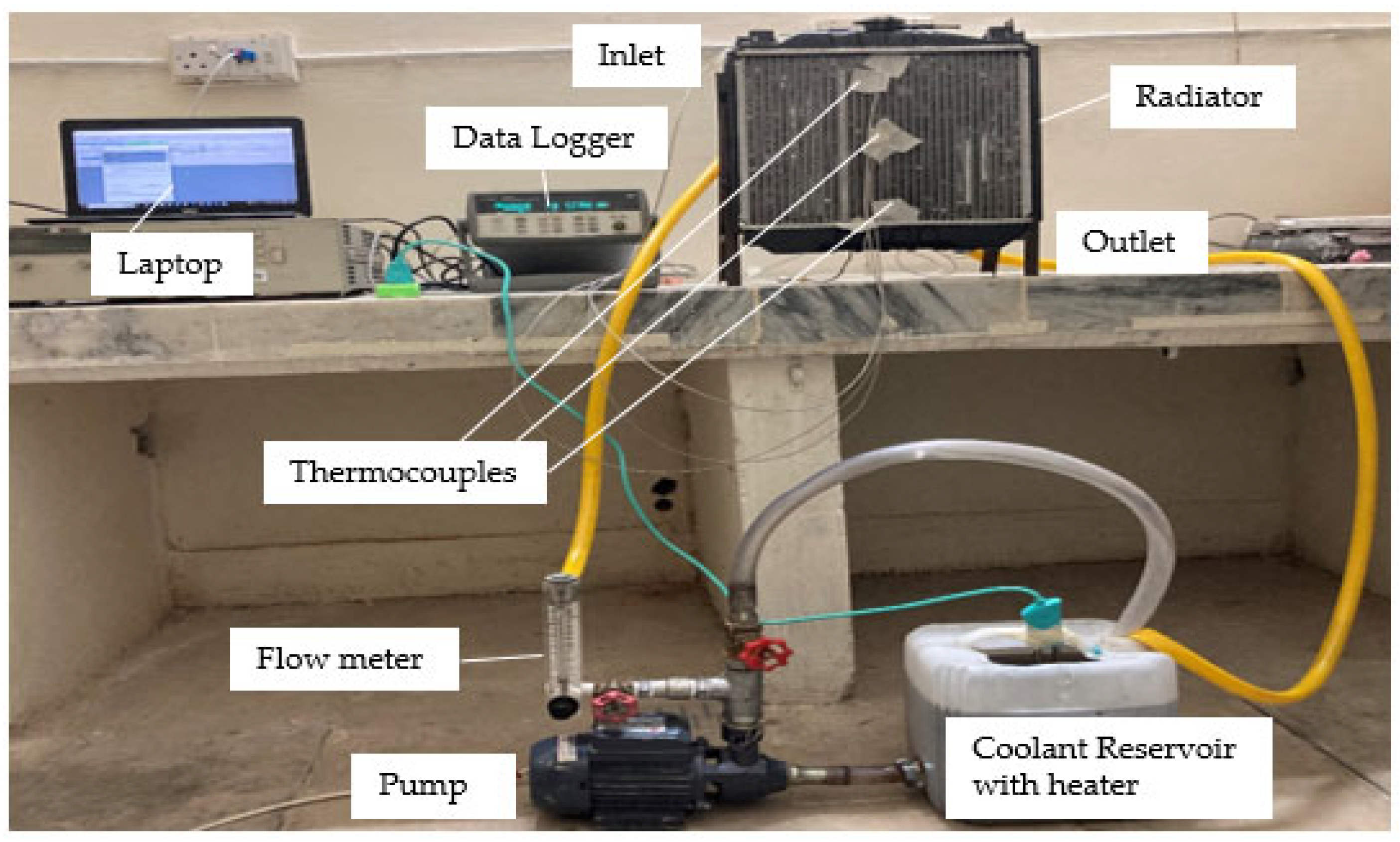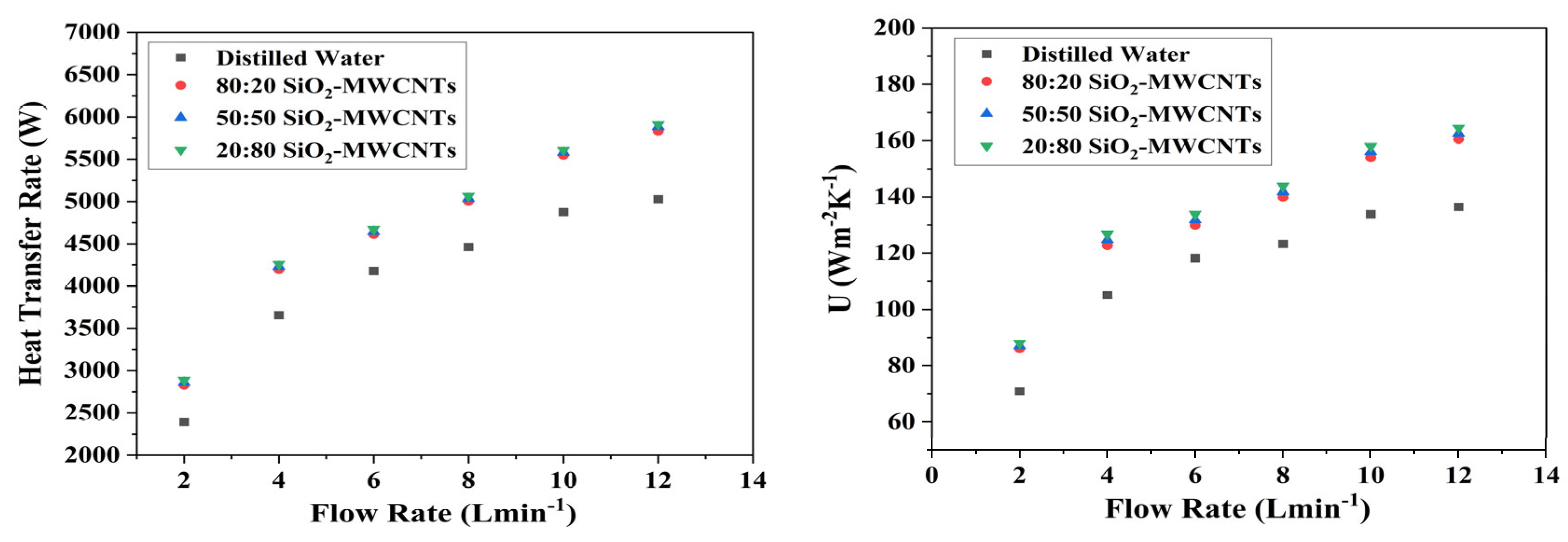Heat Transfer Enhancement in Louvered Fin Flat Tube Radiator Using Hybrid Nanofluids †
Abstract
:1. Introduction
2. Experimental Setup and Procedure
3. Result and Discussion
4. Conclusions
Author Contributions
Funding
Institutional Review Board Statement
Informed Consent Statement
Data Availability Statement
Conflicts of Interest
References
- Jamil, F.; Ali, H.M. Applications of hybrid nanofluids in different fields. In Hybrid Nanofluids for Convection heat Transfer; Elsevier: Amsterdam, The Netherlands, 2020; pp. 215–254. [Google Scholar]
- Sarkar, J.; Ghosh, P.; Adil, A. A review on hybrid nanofluids: Recent research, development and applications. Renew. Sustain. Energy Rev. 2015, 43, 164–177. [Google Scholar] [CrossRef]
- Sahoo, R.R.; Sarkar, J. Heat transfer performance characteristics of hybrid nanofluids as coolant in louvered fin automotive radiator. Heat Mass Transf. 2017, 53, 1923–1931. [Google Scholar] [CrossRef]
- Pak, B.C.; Cho, Y.I. Hydrodynamic and heat transfer study of dispersed fluids with submicron metallic oxide particles. Exp. Heat Transf. Int. J. 1998, 11, 151–170. [Google Scholar] [CrossRef]
- Qasim, M.; Sajid Kamran, M.; Ammar, M.; Ali Jamal, M.; Yasar Javaid, M. Heat transfer enhancement of an automobile engine radiator using ZnO water base nanofluids. J. Therm. Sci. 2020, 29, 1010–1024. [Google Scholar] [CrossRef]
- Xuan, Y.; Roetzel, W. Conceptions for heat transfer correlation of nanofluids. Int. J. Heat Mass Transf. 2000, 43, 3701–3707. [Google Scholar] [CrossRef]



Disclaimer/Publisher’s Note: The statements, opinions and data contained in all publications are solely those of the individual author(s) and contributor(s) and not of MDPI and/or the editor(s). MDPI and/or the editor(s) disclaim responsibility for any injury to people or property resulting from any ideas, methods, instructions or products referred to in the content. |
© 2023 by the authors. Licensee MDPI, Basel, Switzerland. This article is an open access article distributed under the terms and conditions of the Creative Commons Attribution (CC BY) license (https://creativecommons.org/licenses/by/4.0/).
Share and Cite
Ali, W.; Hussain, A.; Usman, A.; Mahmood, K.; Iqbal, M.M.; Khan, H. Heat Transfer Enhancement in Louvered Fin Flat Tube Radiator Using Hybrid Nanofluids. Eng. Proc. 2023, 45, 51. https://doi.org/10.3390/engproc2023045051
Ali W, Hussain A, Usman A, Mahmood K, Iqbal MM, Khan H. Heat Transfer Enhancement in Louvered Fin Flat Tube Radiator Using Hybrid Nanofluids. Engineering Proceedings. 2023; 45(1):51. https://doi.org/10.3390/engproc2023045051
Chicago/Turabian StyleAli, Waqar, Abid Hussain, Ahmed Usman, Khalid Mahmood, Muhammad Mubashir Iqbal, and Haris Khan. 2023. "Heat Transfer Enhancement in Louvered Fin Flat Tube Radiator Using Hybrid Nanofluids" Engineering Proceedings 45, no. 1: 51. https://doi.org/10.3390/engproc2023045051





